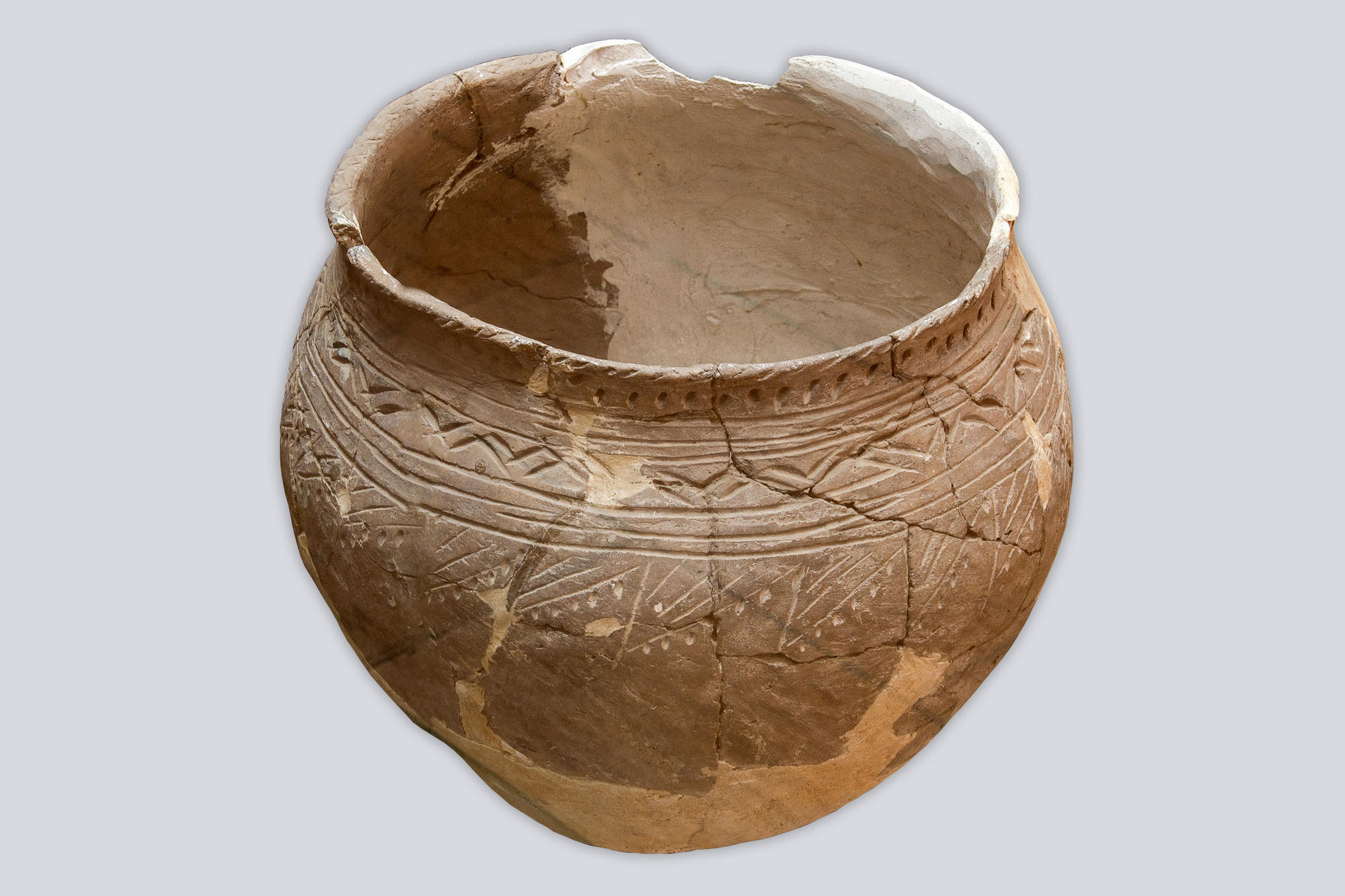The exposition features ancient ceramic vessel which was created in the 15th or 14th century BC. It has a pot-like shape, a flat bottom and a bent neck. The item is decorated with well-preserved ornament on the edges of the neck and the upper half of the body. The pattern consists of uniform elements: straight lines, zigzags and dots.
Pot-shaped vessel
Время создания
15th or 14th century BC
Размер
23,5x28,5 cm
Техника
Manual molding, smoothing, dimple dents, stick modeling, firing in a pit
Выставка
1
Открыть в приложении#1
Pot-shaped vessel
#6
#7
In ancient times, such products were most often sculpted manually from a single piece of clay, without a potter’s wheel. Ancient crafters also employed band and braid technique, rolling the clay into oblong straps and arranging them spiral-like on top of each other. This method fit equally well for making both small cups and pots, and huge jugs. Though not always smooth, they were invariably durable.
#8
The vessel presented in the exposition was discovered by archaeologists during excavations of the altar of the Bolsheotar (Balym) site I. They also found stone and metal ware, pottery, and animal bones. Scientists dated most of the finds as 14th to 12th centuries BC.
Researchers attributed these artifacts to the Balym-Kartashikha stage of the Prikazan culture, which was described by archaeologist Alfred Khalikov in 1953. Prikazan culture was spread in the Volga-Kama Region during the Bronze Age, that is, at the end of the second quarter to second half of the second millennium BC.
#9
The ancient tribes, who had founded settlements on this territory, lived in semi-dugouts and frame-pillar ground-based houses. Most buildings had open fireplaces located directly on the floor or in specially dug holes. Local residents were engaged in cattle breeding, fishing and agriculture; they knew how to process copper and bronze, and also created jewelry and ceramic products. Judging by the fact that archaeologists did not find too many bones of wild animals, tribes rarely hunted. Scientists came to the conclusion that the inhabitants of the Volga-Kama settlements made everything they needed on their own.
#5
The researchers identified the burial sites as belonging to soil and barrow types. The dead were buried lying on their back, with their body straightened, or lying on their side, with their body bent. Their afterlife dowry included weapons, jewelry, household items and ceramics.
At the end of the 20th century, a discussion broke out in the scientific community whether it was appropriate to spin off the Prikazan culture into a separate entity; its chronology was also discussed. The works of Natalia Chlenova, Vladimir Markov, Sergei Kuzminykh, Andrei Chizhevsky, Rimma Goldina and other researchers led to the revision of the concept of a unified Prikazan culture and the separation of independent Lugovsky, Buysky and Maklacheevsky cultures from it.
At the end of the 20th century, a discussion broke out in the scientific community whether it was appropriate to spin off the Prikazan culture into a separate entity; its chronology was also discussed. The works of Natalia Chlenova, Vladimir Markov, Sergei Kuzminykh, Andrei Chizhevsky, Rimma Goldina and other researchers led to the revision of the concept of a unified Prikazan culture and the separation of independent Lugovsky, Buysky and Maklacheevsky cultures from it.
читать дальшескрыть
00:00
00:00
1x
Pot-shaped vessel
Время создания
15th or 14th century BC
Размер
23,5x28,5 cm
Техника
Manual molding, smoothing, dimple dents, stick modeling, firing in a pit
Выставка
1
Открыть в приложении
Поделиться



